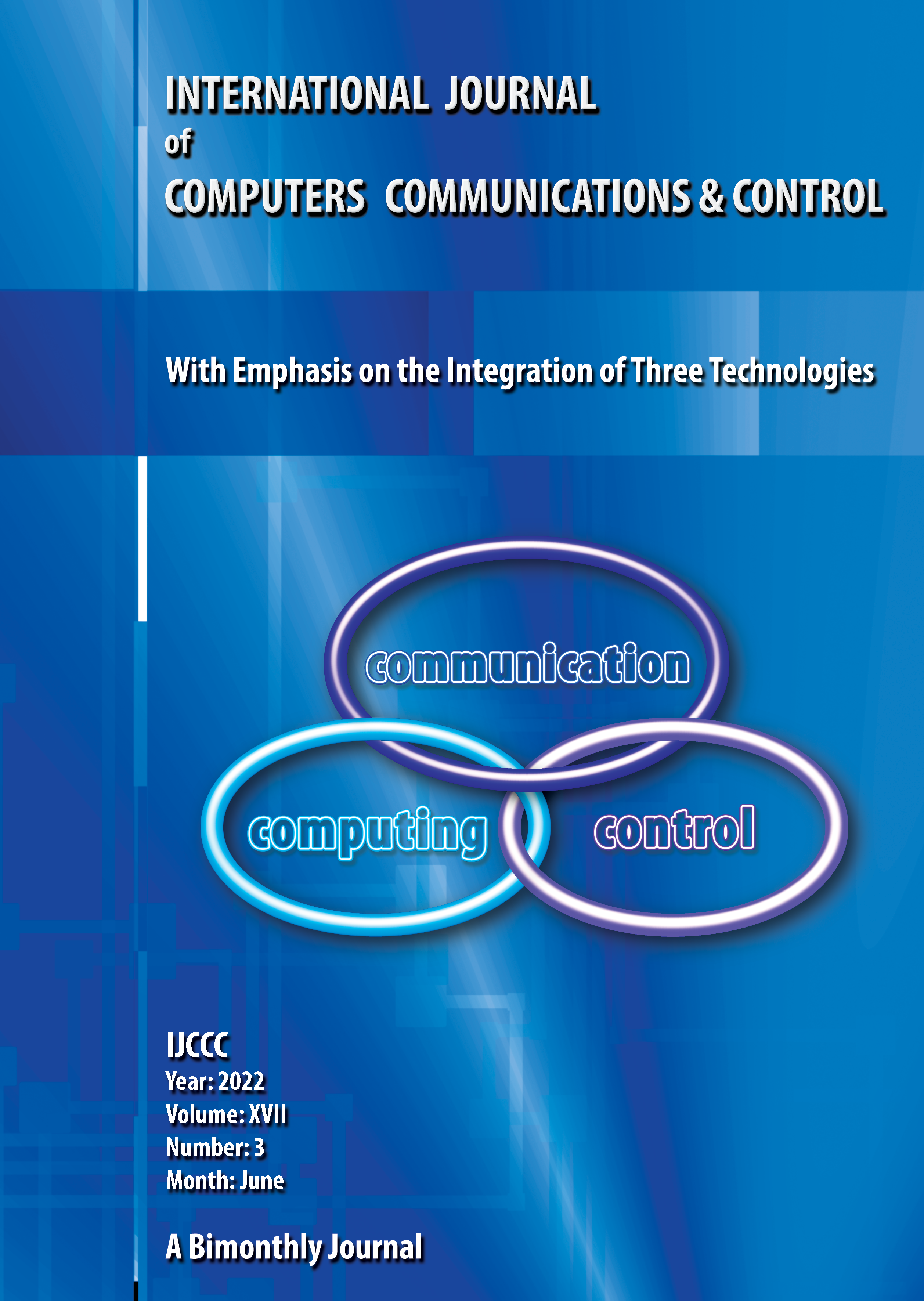Integration of Fuzzy with Incremental Import Vector Machine for Intrusion Detection
DOI:
https://doi.org/10.15837/ijccc.2022.3.4481Keywords:
Adversarial attacks, IDS, global optima, Network anomaly discovery and Intrusion detectionAbstract
IDM design and implementation remain a difficult undertaking and an unsolved research topic. Multi-dimensional irrelevant characteristics and duplicate information are included in the network dataset. To boost the effectiveness of IDM, a novel hybrid model is developed that combines Fuzzy Genetic Algorithms with Increment Import Vector Machines (FGA-I2VM), which works with huge amounts of both normal and aberrant network data with high detecting accuracy and low false alarm rates. The algorithms chosen for IDM in this stage are machine learning algorithms, which learn, find, and adapt patterns to changing situations over time. Pre-processing is the most essential stage in any IDM, and feature selection is utilized for pre-processing, which is the act of picking a collection or subset of relevant features for the purpose of creating a solution model. Information Gain (IG) is utilized in this FGA-I2VM model to pick features from the dataset for I2VM classification. To train the I2VM classifier, FGA uses three sets of operations to produce a new set of inhabitants with distinct patterns: cross over operation, selection, and finally mutation. The new population is then put into the Import Vector Machine, a strong classifier that has been used to solve a wide range of pattern recognition issues. FGA are quick, especially considering their capacity to discover global optima. Another advantage of FGA is their naturally parallel nature of assessing the individuals within a population. As a classifier, I2VM has self-tuning properties that allow patterns to attain global optimums. The FGA-efficacy I2VM model’s is complemented by information gain, which improves speed and detection accuracy while having a low computing cost
References
[2] Sallam, A. A., Kabir, M. N., Alginahi, Y. M., Jamal, A., and Esmeel, T. K. (2020). IDS for Improving DDoS Attack Recognition Based on Attack Profiles and Network Traffic Features, In 16th IEEE International Colloquium on Signal Processing and Its Applications (CSPA), IEEE, (pp. 255-260). https://doi.org/10.1109/CSPA48992.2020.9068679
[3] Mazini, M., Shirazi, B., and Mahdavi, I. (2019). Anomaly network-based intrusion detection system using a reliable hybrid artificial bee colony and AdaBoost algorithms, Journal of King Saud University-Computer and Information Sciences, 31(4), 541-553. https://doi.org/10.1016/j.jksuci.2018.03.011
[4] Yulianto, A., Sukarno, P., and Suwastika, N. A. (2019). Improving adaboost-based intrusion detection system (IDS) performance on CIC IDS 2017 dataset, In Journal of Physics: Conference Series,IOP Publishing, Vol. 1192, No. 1, p. 01201. https://doi.org/10.1088/1742-6596/1192/1/012018
[5] Mikhail, J. W., Fossaceca, J. M., and Iammartino, R. (2019). A semi-boosted nested model with sensitivity-based weighted binarization for multidomain network intrusion detection, ACM Transactions on Intelligent Systems and Technology, 10(3). https://doi.org/10.1145/3313778
[6] Akashdeep, I., Manzoor I., and Kumar, N. (2017). A feature reduced intrusion detection system using ANN classifier, Expert Systems with Applications, 88, 249-257. https://doi.org/10.1016/j.eswa.2017.07.005
[7] Li, K., Zhou, G., Zhai, J., Li, F., and Shao, M. (2019). Improved PSO_AdaBoost ensemble algorithm for imbalanced data, Sensors (Switzerland), 19(6). https://doi.org/10.3390/s19061476
[8] Shahraki, A., Abbasi, M., and Haugen, í˜. (2020). Boosting algorithms for network intrusion detection: A comparative evaluation of Real AdaBoost, Gentle AdaBoost and Modest AdaBoost, Engineering Applications of Artificial Intelligence, 94, 103770. https://doi.org/10.1016/j.engappai.2020.103770
[9] Han, K., Wang, Y., Zhang, C., Li, C. and Xu, C. , (2018). Autoencoder inspired unsupervised feature selection, In Proceedings of the 2018 IEEE International Conference on Acoustics, Speech and Signal Processing (ICASSP),IEEE, pp. 2941-2945. https://doi.org/10.1109/ICASSP.2018.8462261
[10] Wang, C., Zheng, J., and Li, X., (2017). Research on DDOS attacks detection based on RDF- SVM, In Proceedings of the 2017 10th International Conference on Intelligent Computation Technology and Automation (ICICTA),IEEE, pp. 161-165. https://doi.org/10.1109/ICICTA.2017.43
[11] Revathy, G., Kumar, P. S., and Rajendran, V. (2021). Development of IDS using mining and machine learning techniques to estimate DoS malware, In International Journal of Computational Science and Engineering, 24(3), 259-275. https://doi.org/10.1504/IJCSE.2021.115646
[12] Jianjian, D., Yang, T., and Feiyue, Y. (2018). A novel intrusion detection system based on IABRBFSVM for wireless sensor networks, In Procedia computer science, 131, 1113-1121. https://doi.org/10.1016/j.procs.2018.04.275
Additional Files
Published
Issue
Section
License
ONLINE OPEN ACCES: Acces to full text of each article and each issue are allowed for free in respect of Attribution-NonCommercial 4.0 International (CC BY-NC 4.0.
You are free to:
-Share: copy and redistribute the material in any medium or format;
-Adapt: remix, transform, and build upon the material.
The licensor cannot revoke these freedoms as long as you follow the license terms.
DISCLAIMER: The author(s) of each article appearing in International Journal of Computers Communications & Control is/are solely responsible for the content thereof; the publication of an article shall not constitute or be deemed to constitute any representation by the Editors or Agora University Press that the data presented therein are original, correct or sufficient to support the conclusions reached or that the experiment design or methodology is adequate.








